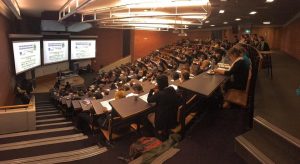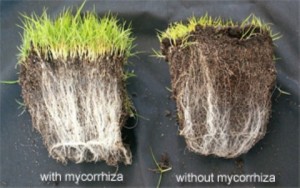the blog
the latest on environmental research & monitoring....
Marine Science Conference 2016
Edaphic Scientific attended the joint conference between the New Zealand Marine Sciences Society and Australian Marine Science Association in Wellington, New Zealand. The conference was attended by over 500 marine science researchers from Australia and New Zealand. Talks and posters covered a wide range of topics from ocean acidification to coral bleaching to marine parks…
Read MoreWhy your soil moisture measurements are not accurate
Manufacturers of soil water content sensors supply their product with an output registering volumetric water content (VWC), typically expressed as a percentage. But where does this number come from and what does it actually mean? In all likelihood, the output value from the sensor will not be equal to the actual VWC of your particular…
Read MoreScientists adrift in the Pacific on a Kon-Tiki tour
What would possess a team of scientists to drift on a primitive raft in the Pacific Ocean for over 60 days? As always, it is in the name of science – specifically anthropology and environmental science research. Known as the Kon-Tiki2 Expedition, the scientists are examining if it was possible for Polynesian and South American…
Read MoreRenewable energy from the mixing of wastewater streams
Dr Fernanda Helfer, Griffith University, was the recipient of the 2016 Edaphic Scientific Research Equipment Grant. In this blog post, Dr Helfer explains her research on renewable energy and wastewater. From 2013 to 2016, the global amount of fresh drinking water produced through seawater reverse osmosis desalination (RO) increased from 25 million m3day-1 to…
Read More5 common mistakes when measuring soil moisture
Soil moisture, or soil volumetric water content, is easily measured with probes, sensors or handheld meters. These meters are as simple as pushing the probe or sensor into the soil, pressing read on the handheld meter, and you’re done. As easy as this appears, there are surprisingly many pitfalls and traps that can lead to wrong…
Read MoreIs the Great Barrier Reef moving to Tasmania?
Many tropical marine species are starting to appear in temperate waters. Around Sydney, several tropical fishes, such as surgeonfish, have been observed. Corals have also been found to be overtaking algal forests off the coast of New South Wales. In New Zealand, tropical fishes have been observed in marine waters where they have never been seen…
Read Morewhat is biofilm?
Ever wondered what that slime is in your bathroom, or that plaque on your teeth? Most likely it is a biofilm – a community of bacteria growing within a slime on a surface that is constantly moist. Biofilms are everywhere – from that plaque on your teeth, to sewage pipes, to the guts of cows.…
Read Morehow plants communicate
can plants communicate with one another? This question is not as outrageous as it might at first seem. Certainly, plants are not like The Ents in the Lord of the Rings, coming to life and talking with one another. But scientists have amassed a large amount of evidence to suggest that plants do communicate with…
Read Morea blog on the latest in environmental research
Climate change, species extinctions, ecosystem processes, soils and plants… and how the science of light, gas and water can explain all of these The Edaphic Scientific Blog explores the science behind climate change, species extinctions, ecosystem processes, biodiversity, marine and terrestrial ecology, soil science, plant and animal physiology, and even the urban and built environment.…
Read More- « Previous
- 1
- 2
- 3
- 4







